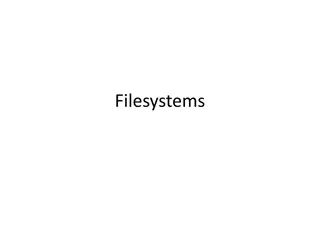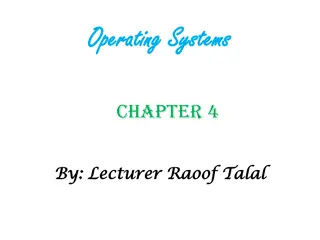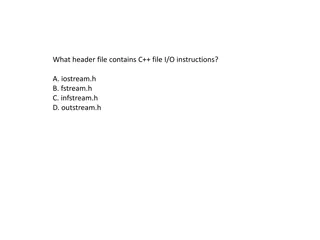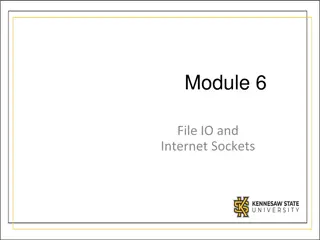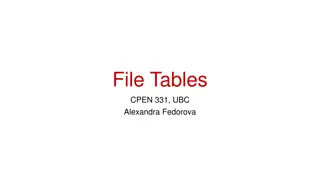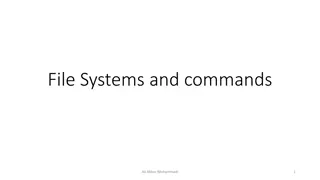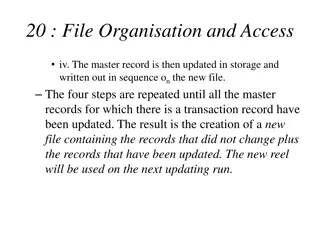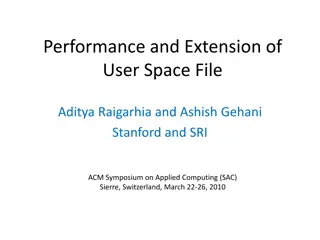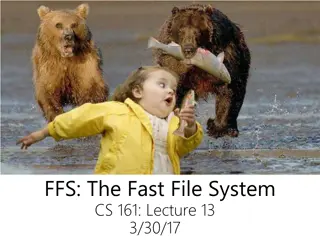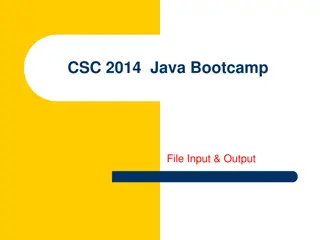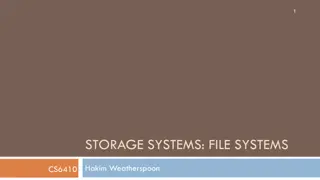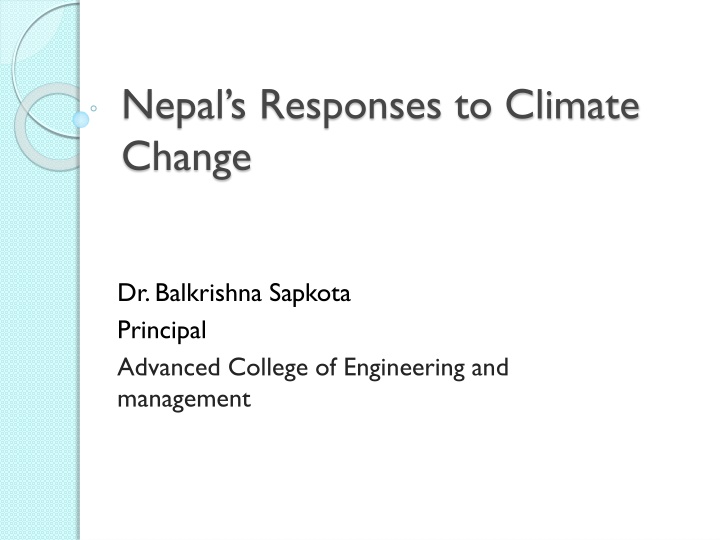
Nepal's Responses to Climate Change
Learn about the impacts of climate change, anthropogenic drivers, probabilities of extreme weather events, receding glaciers, vulnerable populations, and strategies for mitigation and adaptation in Nepal. Discover how the country is moving towards a low-carbon economic development paradigm for sustainable growth.
Download Presentation

Please find below an Image/Link to download the presentation.
The content on the website is provided AS IS for your information and personal use only. It may not be sold, licensed, or shared on other websites without obtaining consent from the author. If you encounter any issues during the download, it is possible that the publisher has removed the file from their server.
You are allowed to download the files provided on this website for personal or commercial use, subject to the condition that they are used lawfully. All files are the property of their respective owners.
The content on the website is provided AS IS for your information and personal use only. It may not be sold, licensed, or shared on other websites without obtaining consent from the author.
E N D
Presentation Transcript
Nepals Responses to Climate Change Dr. Balkrishna Sapkota Principal Advanced College of Engineering and management
What is climate change? Climate change is the changes in average weather at a given point and time of year,over a long period (typically 30 years). It is one of the most important global environmental challenges facing humanity with implications for food production, natural ecosystems, freshwater health,etc supply,
Anthropogenic climate change drivers Radiative forcing from CO2, methane and nitrous oxide is +2.30 W m-2( 10%) Other gases contribute about + 0.7 W m-2 Aerosols provide net cooling of about -1.2 W m-2. Uncertainty in this estimate is the dominant uncertanty in radiative forcing. Net forcing is + 1.6 W m-2
Glaciers and frozen ground are receding Area of seasonally frozen ground in NH has decreased by 7% from 1901 to 2002 Increased Glacier retreat since the early 1990s
Who are vulnerable? Geographical space: people who live on High mountain areas or, arid or semi-arid lands, in low- lying coastal areas, in water limited or flood-prone areas, or on small islands Social space: developing countries have lesser capacity to adapt and are more vulnerable to climate change damages, just as they are to other stresses. This condition is more extreme among the poorest people (double-exposure). Source: Olmos, Vulnerability and Adaptation to Climate Change: Concepts, Issues, Assessment Methods , Foundation Paper, Climate Change Knowledge network, 2001.
Dealing with Climate Change: Mitigation and Adaptation Climate change Impacts Mitigation Adaptation Responses
Move towards new Paradigm -low carbon economic development strategy must address Win-Win Situation for Nepal Development: sustained real growth of 8-10% over 20 yrs that embeds both adaptation and mitigation into development that is low in carbon content, inclusive and broad based Adaptation: adjustments in human and natural systems, in response to actual or expected climate stimuli or their effects, that moderate harm or exploit beneficial opportunities (OECD 2009) Mitigation: consists of activities that aim to reduce GHG emissions, directly or indirectly, by avoiding or capturing GHGs before they are emitted to the atmosphere or sequestering those already in the atmosphere by enhancing sinks such as forests (OECD 2009) 9
Why Climate Change Mitigation? Fossil Fuel Burning 8 billion tons go in 4 billion tons added every year 800 billion tons carbon Ocean Land Biosphere (net) 2 2 = 4 billion tons go out +
Science, Vol 305, Issue 5686, 968-972, 13 Aug. 2004 Historical emissions profile Scientific American, Special Issue, pp. 50-57, Sept. 2006 Billion of Tonnes of Carbon Emitted per Year Business as usual continue at current rate of emission growth (>800 ppm, +5 C) 14 Hold current emissions (2007) (525 ppm, +3 C) Historical emissions 7 Cut 2007 emissions in half over 50 years (450 ppm, +2 C) 1.9 0 2105 1955 2005 2055
What are the options? Nuclear Fission CO2 Capture and Storage Fuel Switching 16 BtC/y Energy Efficiency and Conservation Stabilization Triangle Forests & Soils 8 BtC/y 2007 2057 Renewable Electricity and Fuels
Measures to mitigate climate change Para. 37 of Decision 17/CP.8 Articles 4.1 and 12.1 of the Convention, commits Parties to develop national and, where appropriate, regional programmes and measures that will result in the mitigation of human induced climate change. Although developing countries are not required to take on emission reduction commitments, undertaking climate change mitigation and assessment could provideancillary benefits for sustainable development, such as particulate pollution reduction, ../..
Why Nepal concerned? Nepalese should be concerned about climate change since this phenomenon might have substantial adverse impacts on them. Main categories of impacts are : water resources and hydro power; agriculture and human health. Each of these impacts poses serious threats to economy of Nepal Therefore, Nepal has to initiate mitigation measures for its own sake
Developing Mitigation strategy: Identifying target GHG and sources
GHG emissions from Nepal in the base year 2000 (MOEST, 2014) 3%2% Agriculture Energy Waste LULCF 27% 68% Total ghg emission =24877 Gg CO2 equivalent (eq)
Key sources The first five emission sources in the list of key emission sources in Nepal, together accounting for 90.2% of emissions, are as follows: Enteric Fermentation Agricultural Soils Residential (CH4 emission) Road Vehicles Residential (CO2 emission) Manure Management
700 600 Emission ( Gg CH4/Year) 500 CH4 from Manure management 400 CH4 from enteric fermentation 300 200 100 0 2000 2001 2002 2003 2004 2005 Year 2006 2007 2008 2009 2010 CH4 Emission from Livestock The methane emission from overall livestock sector is in increasing trend with the growth rate of 1.46% per annum
Forestry: GHG emission/Sequestration in Gg 20000 15000 10000 5000 0 GHG emission/Sequestration 1978/79 1985/86 1994 2000 2005 -5000 -10000 -15000 -20000
CO2 emission from fossil fuel consumption 4000 3500 3000 2500 CO2 (Gg) 2000 1500 1000 500 0 Growth rate: 2000/01-2005/06: 20.5 Gg/yr 2006/07-2011/12: 222.38 Gg/yr
Calculated annual GHG emissions by different types of vehicles in 2012/13 500 429 450 GHG emissions, Gg CO2e 379 400 333 350 300 220 250 188 200 131 150 83 100 28 23 50 3 0 3 wheeler Tractor/ Power Truck/tanker Crane/dozer/ Motorcycle Car/Jeep/ Van Microbus Minibus Pick Up Bus Excavator (LPG) trailer
Solid Waste Generation 0.365 0.36 0.355 Solid Waste Generation, Kg/Capita/Day 0.35 0.345 Gg 0.34 0.335 0.33 2003 2008 Year Methane Emission from Wastewater, Gg 18 16 14 Methane Emission from Solid Waste in Gg Methane Emission from Wastewater in Gg 12 10 Gg 8 6 4 2 0 2000 2002 2004 2006 2008 2010 2012 2014 Year 2016 2018 2020 2022 2024 2026 2028 2030
Climate Effects of Black Carbon Aerosols in China and India Surabi Menon, James Hansen, Larissa Nazarenko, Yunfeng Luo In recent decades, there has been a tendency toward increased summer floods in south China, increased drought in north China, and moderate cooling in China and India while most of the world has been warming. We used a global climate model to investigate possible aerosol contributions to these trends. We found precipitation and temperature changes in the model that were comparable to those observed if the aerosols included a large proportion of absorbing black carbon ("soot"), similar to observed amounts. Absorbing aerosols heat the air, alter regional atmospheric stability and vertical motions, and affect the large scale circulation and hydrologic cycle with significant regional climate effects (Science, 27 September 2002).
Diurnal Variation of BC EC February 2016 (T) and 2010 (B) in KTM 45.0 40.0 35.0 30.0 25.0 370nm 20.0 880nm 15.0 10.0 5.0 0.0 35.00 30.00 25.00 20.00 370nm 880nm 15.00 10.00 5.00 0.00
Monthly variation of BC 50 50 40 40 30 30 3 BC in ug/m 20 20 10 10 0 0 N D J F M A M J J A S O N D J F M A M J J A S O N D 2008 2009 2008/2009 Winter 2010 0 mm water 2009/2010 Winter 31.0 mm recorded 21
Influence of local events on BC 45 40 35 30 25 BC ug/m3 20 13thFeb10 11thFeb10 5thDec09 15 31stMay09 10 6thDec09 1stJune09 5 0 Working Strike-1 Working Strike-2 BeforeShiv Shiva AfterShiv 26
Impact------ Days & nights becoming warmer - cool days & cool nights becoming less frequent (Baidya et. al.2008) Majority of glaciers retreated by 30-60m & glacier surface thinning (Mool et. al. 2002; Shrestha et. Al 2012). Winter rains failed in 2005 and 2008 (NAPA, 2010) Across hills & mnts, springs & rivers drying causing drinking water scarcity (WFP 2009; Regmi and Adhikari 2007) Biodiversity affected due to drought, forest fires, land use changes & desertification in some of the areas (Regmi and Adhikari 2007) Extreme Weather Events (floods, landslides etc) on rise Floods & landslides resulted in over Rs 9 billion ($ 90 million) worth of damages (2001-2008) (Banskota 2011) Highly dependent on climate-sensitive economic activities such as agriculture, forestry, tourism etc are affected. 29
Mitigation option: Livestock and Paddy Population management and genetic improvement (management and animal breeding, increase production efficiency, reduction in the number of low productive cattle, disposal of unproductive animals, improved feeding practices) Manure management Pasture Management (avoid over grazing and careful selection of new species) Paddy: water and soil management and fertilizer application
Livestock, Paddy and forestry-Projection Use of EXACT Model developed by FAO 2015-2035 Assumptions Livestock Low- 3% replacement Medium- 5% replacement High- 7% replacement Source for all scenario: LCED (2014), ADAPT- Nepal
Agriculture- Carbon Balance - LOW (2015- 2035) 500 400 300 MtCO2 eq 200 100 0 -100 Rice 210 235 Grassland 0 -49 Livestock 475 221 With Without Source: LCED (2014), ADAPT- Nepal
Carbon Balance- Medium (2015-2035) 500 400 300 Mt CO2 eq 200 100 0 -100 Rice 103 102 Grassland -48 -86 Livestock 475 134 With Without Source: LCED (2014), ADAPT- Nepal
Carbon Balance -High (2015- 2035) 500 400 300 MtCO2 eq 200 100 0 -100 Rice 95 98 Grassland -48 -86 Livestock 474 182 With Without
Forestry The high LCED scenario is set to achieve 40 percent forest cover as per the national vision and Millennium Development Goal (MDG). Medium LCED scenario involves abatement activities at the moderate intensity and aims to achieve half the targets of the high LCED scenario. Low LCED scenario involves the abatement options are planned and implemented at the minimum level of a quarter of the targets of the high LCED
Carbon balance (net emissions versus sequestration) in baseline (in million tCO2-eq) and LCED scenarios without double accounting due to deforestation (2015-35) 400 305 200 Carbon balance in Millions tCO2 0 -200 -201 -400 -389 -600 -800 -747 Without Low LCED Medium LCED High LCED
Energy: Overall Scenarios Replacement of traditional and fossil fuels by clean energy alternatives electricity, LPG and ICS. Replacement of incandescent bulbs by CFL and LED. Promotion of electrification in all 5 sectors for lighting, heating and other purposes. Intervention of more efficient process technologies in industries Intervention of mass transportation system Introduction of new electric and bio-fuel transportation technologies 37
Low Emission Strategic Option Scenario (LESO) GDP growth rate according to BAU case, i. e. with an average GDP growth rate of 6 % Electrification in major end-uses in all five sectors. Total electrification for lighting in rural and urban sub- sectors and cooking in urban sub-sector, with use of efficient lighting technologies such as CFL and LED. Energy efficiency improvement in industrial sector end-uses such as lighting, process heat. Fuel switching to modern fuels such as electricity, LPG and other liquid petroleum and renewable energy such as solar, biogas, bio-fuel etc. Penetration of ICS as efficient biomass conversion technology for cooking. Mass transportation in transport sector.
High Economic Growth (HIG) Scenario GDP growth rate was considered 6.5 % for 2015, 11.2 % for 2020 and an average GDP growth rate of 9.2 % from 2025-30 The shares of each demand technology in the energy supply in future years are considered to be invariant i. e. energy mix of total demand will be as similar as in the base year.
Low Emission High Economic Growth (LEHI) Scenario GDP growth rate according to HIG case Electrification in major end-uses in all five sectors. Total electrification for lighting in rural and urban sub- sectors and cooking in urban sub-sector, with use of efficient lighting technologies such as CFL and LED. Energy efficiency improvement in industrial sector end-uses such as lighting, process heat. Fuel switching to modern fuels such as electricity, LPG and other liquid petroleum and renewable energy such as solar, biogas, bio-fuel etc. Penetration of ICS as efficient biomass conversion technology for cooking. Mass transportation in transport sector.
Source: LCED (2014), ADAPT- Nepal GHG emissions 20 18 16 14 million tons BAU LESO HIG LEHI 12 10 8 6 4 2 - 2010 2015 2020 2025 2030 Reductio n - 42% - 43% 2010 2015 2020 2025 2030 BAU LESO HIG LEHI 4 4 4 4 5 5 5 5 7 6 7 6 9 7 11 8 13 8 18 10 41
Nepals Response Climate Change Policy, 2011. Vulnerability Assessment Capacity Enhancement Resource Allocation Mainstreaming in Planning Process Social Mobilization National Periodic Plan (2013/14-2015/16) Information Dissemination Integration in Development Programs Capacity for Climate Change Resilient Climate Change Budget Code, 2012 Budget tracking
NAPA/LAPA National Adaptation Program of Action (NAPA) Country Vulnerability Assessment Coping Strategy Development Community Engagement ( The total cost for implementing National Adaptation program of Action (NAPA) is estimated at US$ 350 million) Local Adaption Plan for Action (LAPA) Integrating climate change into local participatory planning process. Implementing adaptation actions (80% of estimated NAPA cost is committed to be spent at the local - village/municipal level)
Climate Public Expenditure About 2 % of GDP and 8% of Government Expenditure is on climate activities . The trend is increasing. Around 80% of climate change expenditure relates to adaptation activities. Around 60% of the expenditure is executed directly by Central Agencies and 40% through Local Agencies (Unconditional Capital grants ).
Conclusion Adoption of forest conservation, reforestation, afforestation and sustainable forest management practices can contribute to conservation of biodiversity, watershed protection, rural employment generation, increased incomes to forest dwellers and carbon sink enhancement. Livestock: Population management and genetic improvement can reduce methane emission substantially Efficient, fast and reliable public transport systems such as Mass transport system, electric driven buses can reduce urban congestion, local pollution and greenhouse gas emissions
Conclusion Adoption of cost-effective energy-efficient technologies in Industry, Transport, electricity generation and end-use can reduce costs and local pollution in addition to reduction of greenhouse gas emissions. Shift to renewable, some of which are already cost effective, can enhance sustainable energy supply, can reduce local pollution and greenhouse gas emissions.
Improvement Required Wide gap on words and action Need to move away from the DAD approach (Decide, Announce, Defend) towards a participatory approach to policy development. A clearly defined standard policy development process can discourage selective consultation.



